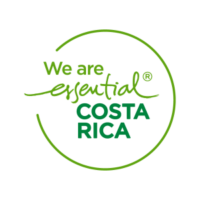Service 24/7/365
info@gypsycabnosara.com
Phone: + (506) 8302-1903
info@gypsycabnosara.com
- About
- Contact
- Publications
- LIR Airport – Nosara
- SJO Airport – Nosara
- Other Services
- My account
- Cart
- About
- Contact
- Publications
- LIR Airport – Nosara
- SJO Airport – Nosara
- Other Services
- My account
- Cart
Before you come to Nosara

In earlier posts, we discussed the history of Nosara, its key attractions, and how to get there. In this post, we will look at certain characteristics of Nosara that you should be aware of before visiting, with the hope that you will be at least somewhat prepared for what you will discover.
Before you arrive in Nosara, you should be informed that you will be visiting one of Costa Rica’s most secluded locations. Although it is a tourist center par excellence, you will not find the typical tourist infrastructure that you would find in any other region of the world, let alone in Costa Rica.
Before I go into depth, I’d want to tell you what we’re going to talk about, starting with the situation at the airport, whichever of the two you arrive at. Then we’ll look at the geographical circumstances of the region, the weather, and some critical security issues.
All of this is to give you a sense of what you will discover in Nosara if this is your first visit.
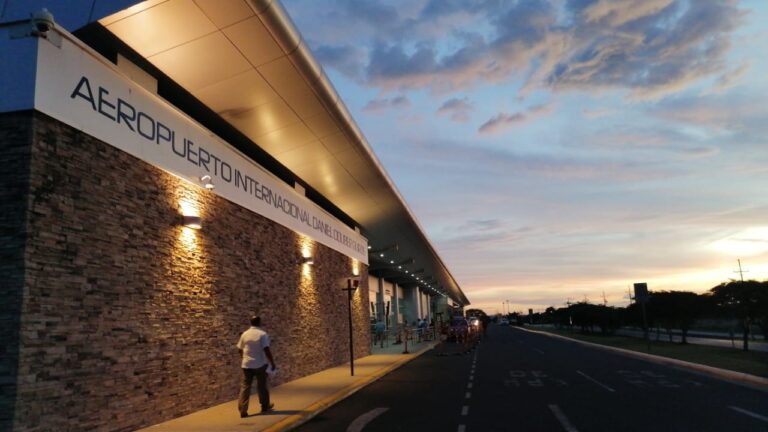
LIR and SJO Airport situation
Let’s start our overview of the Nosara issue with a breakdown of the airports. At any airport, drivers are not permitted to wait for their passengers inside the terminal. All drivers must wait for our customers outside the airport, on the sidewalk, or in the open.
As a result, we frequently employ various measures at our disposal to facilitate the customer’s travel and the driver’s job. We frequently ask them if they arrive at the airport earlier, to wait for us at a convenience shop or café, that is on the sidewalk outside the airport. The situation is the same in both airports except that in Juan Santamaria International Airport it is on the right, while in Liberia International Airport it is on the left of the main exit.
In this manner, and only if you arrive or finish your customs and immigration processes a little sooner, you may wait for us in comfort for the few minutes you require, or if you have reserved a seat on the shared shuttle from Liberia, the time required until the shared shuttle departs.
However, airports are hot zones in the sense that they are filled with people attempting to earn a livelihood by providing services, so you are quite likely to be contacted by one of these people who will constantly offer to fix your problem.
This frequently causes us major issues since some consumers are persuaded by these personalities and end up employing risky transportation services.
Do not mistreat them; they are actually harmless if you do not react to them. Yet, do not be influenced; simply ignore them. Finally, they are only trying to make a living, but they can link you with dangerous services, dangerous transportation units, or even criminals.
Be attentive and very vigilant about your stuff, as you would anywhere else on the globe. If you must chat on the phone or send messages, do so in a location where you feel safe, preferably inside the airport, or as soon as you get a seat in one of these convenience stores or cafes.
Try to use the facilities at the airport. Keep in mind that the drive will be long, and even if the driver offers to stop, it is best to be prepared for a long trip ahead of time.
Similarly, it is critical that at departure you consider the entire road situation, which means that you leave with a very good time, because during the course of the journey you may encounter several situations that can delay you, such as a flat tire, a tree branch falling on the road, or another situation even of a social nature, such as a protest.
It is critical that you understand the reality that two and a half hours away from the airport in Costa Rica does not equate to being anywhere in the United States or Europe, much less Nosara.
Geographical situation
As we can see from the publication How to Get to Nosara, it is located after passing through some towns; however, access is difficult because there is no direct highway from a large population center to Nosara; instead, you must take roads that lead to other places and detours that eventually lead to Nosara.
Nosara is situated on the Pacific coast, behind the Nicoya complex’s hills. As a seaside town a few meters above sea level, it has hills behind it that are little more than 1,000 meters high but capture the humid breezes coming from the sea and usually expel water on the slopes of these hills.
This results in a plethora of watercourses, small streams, streams, and big rivers in this area. Despite the engineering work done in the town, the plain where Nosara is located is continually flooded during the rainy season.
Whether
In terms of weather, Nosara is naturally immersed in a tropical environment, although it has a tropical savanna climate, which has a longer and more defined dry season and a more intense rainy season.
The dry season generally begins in November and lasts until March, following a period that begins in which it is sunny for most of the day but rains in the afternoons and at night, and finishes in September and October with a season of severe rain.
Nosara normally floods between September and October, while there are certain regions where the flooding begins sooner.
The average temperature of Nosara is around 26 degrees Celsius, with a year-round relative humidity of over 80 percent, thus the thermal sense is somewhat greater than 26 degrees Celsius.
Temperatures typically range from 24.6 degrees in October to 27.3 degrees in March, with relative humidity ranging from 63 percent in February to 90 percent between September and October. The month with the fewest wet days is February (1.73 days), while September has the most rainy days (27.60 days). February is the driest month, with only 6 mm of rain. The wettest month is October, with an average of 433 mm.
The visiting season begins in November and lasts through August, with most operations closed in September and October due to the flood season.
Infrastructure
Let’s begin by saying that there are no four-story buildings in Nosara, with the exception of a structure in the middle of Bocas de Nosara that is positioned away from the beach, but there are no four-story buildings in the entire beach area.
Furthermore, the entire tourist area is located in a secondary forest with a large space between the various buildings, so there is a lot of flora and even wild animals.
Despite the fact that the entrance road was recently resurfaced, all of the neighboring roads are dirt roads with potholes that are dusty in the summer and muddy in the rainy season.
Nosara does not have casinos, major bars, or dance halls; instead, there are a significant number of modest luxury hotels, most of which are dedicated to yoga and meditation, surfing, and adventure sports, and a great number of residences, most of which are for rent.
Although there is a significant level of visitation, the socioeconomic level of the tourists is typically medium-high to high, and while Costa Rica is also known for high-level tourism, Nosara stands out by having tourism that is even higher than the national average.
Security
Nosara, in general, is as safe as any other area. In a Facebook group where I belong, there is the occasional report of thieves or items being stolen from cars that people leave unattended or even unlocked, but overall, it is a relatively safe town.
There have been no reports of personal crimes, assaults, or personal attacks of any type. Aquatic accidents or animal assaults, whether aquatic or terrestrial, are uncommon.
Nosara is a tiny town where most people know one another, but there are times when numerous non-locals come to town to cover labor shortages.
People from all over the world come in search of employment in this town, and this includes unprivileged class laborers not only from Nicaragua but also from other parts of Costa Rica, and even from Argentina, Venezuela, and Colombia. Some of them contribute to the same issues.
We don’t want to suggest that just poor people have terrible habits or, even worse, that all poor people have bad habits. Bad habits may be found in many types of people, but when we talk about certain forms of crime, they are generally associated with a certain person.
Of course, this is a problem, and we must follow a few basic principles to protect the safety of our goods.
- Never leave your car unlocked or unattended.
- Do not bring valuables to the beach or leave them in your vehicle.
- Try not to lose sight of your automobile if you are at a restaurant or somewhere else.
- Do not leave surfboards or other equipment alone on the vehicle’s roof.
- Make full use of your rental home’s or hotel’s security measures.
- Avoid hiding keys in conspicuous areas.
- Never disclose your whereabouts to anybody.
- Beware of extremely friendly people.
Following these basic principles enhances your chances of enjoying a trouble-free vacation to Nosara. But, just in case, it is always a good idea to have all of your information on hand.
Nosara has a police station, while Guiones has a tourist police station. If you have a complaint, you should proceed to Nicoya, the next town, to the office of the OIJ (Judicial Investigation Office) or the Court House. There is also a firefighter’s office in Nosara, and they are now constructing a squat of beach lifesavers.
Here are some of the most crucial phones to have. Calls from outside the nation are routed through the country code. This code is not required from the inside.
| Emergency | 911 |
| Nosara Centro Police Station | +(506) 2682-5126 |
| The Guiones Tourist Police | +(506) 2682-5332 |
| Firefighter duty phone | +(506) 8709-0614 |
| Nicoya Police Station | +(506) 2685-5328 |
| OIJ in Nicoya (Investigative police) | +(506) 2685-5328 |
| Nicoya Court House | +(506) 2685-5051 |
| Drug-related report | 1176 |
More significant than the low crime rate is the fact that Nosara is an organized community with established groups of individuals working not only in security but in all elements of the town’s well-being.
In a future post, we will talk about all those groups.
Conclusions.
We have seen everything linked to the airport and the geographical location, the weather, the infrastructure, and the security in this publication. We believe that by providing this knowledge, you will have a better understanding of the place you are visiting, allowing you to be physically and psychologically prepared to completely experience what Nosara has to offer.
In the next publication, we will see the recommendations we give when it comes to packing, the amount of luggage, and, in general, the type of appropriate clothing according to the time of year in which you visit us, closely related to the information we have just shared.
Then we will continue to see other aspects of Nosara, such as where to stay, what to do, where to eat, and much more.
- Nosara vs. Tamarindo: Your Ultimate Guide to Choosing the Perfect Costa Rican Destination – A Gypsy Cab Nosara Exclusive
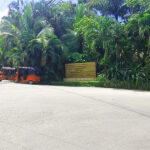 Embark on a picturesque journey to Nosara and Tamarindo with Gypsy Cab Nosara. Discover the tranquil beaches, vibrant surf spots, and culinary delights that await in these Costa Rican paradises. Your adventure begins here!
Embark on a picturesque journey to Nosara and Tamarindo with Gypsy Cab Nosara. Discover the tranquil beaches, vibrant surf spots, and culinary delights that await in these Costa Rican paradises. Your adventure begins here! - 10 Articles You Can Read on National Geographic About Costa Rica
 Explore the vibrant world of Costa Rica through ten insightful articles from National Geographic. Discover the country's rich biodiversity, culinary revolution, conservation efforts, and unique cultural practices.
Explore the vibrant world of Costa Rica through ten insightful articles from National Geographic. Discover the country's rich biodiversity, culinary revolution, conservation efforts, and unique cultural practices. - Costa Rica’s Journey to Independence: A Tapestry of Resilience and Unity
 Embark on a rich and vibrant journey through Costa Rica's path to independence. Discover the significant events, notable figures, and cultural narratives that have shaped this remarkable nation. Engage with the past and explore the promising road ahead, as we celebrate the spirit of 'Pura Vida' in modern Costa Rica.
Embark on a rich and vibrant journey through Costa Rica's path to independence. Discover the significant events, notable figures, and cultural narratives that have shaped this remarkable nation. Engage with the past and explore the promising road ahead, as we celebrate the spirit of 'Pura Vida' in modern Costa Rica. - Nosara vs. Santa Teresa: A Comprehensive Guide for Tourists by Gypsy Cab Nosara
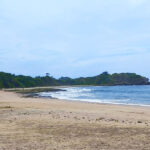 Explore the contrasting charms of Nosara and Santa Teresa with our comprehensive guide. From serene beaches to vibrant nightlife, discover which Costa Rican gem aligns with your travel dreams. Brought to you by Gypsy Cab Nosara.
Explore the contrasting charms of Nosara and Santa Teresa with our comprehensive guide. From serene beaches to vibrant nightlife, discover which Costa Rican gem aligns with your travel dreams. Brought to you by Gypsy Cab Nosara. - Introduction to Playa Guiones
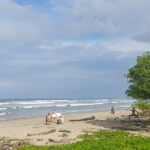 Discover the beauty and charm of Playa Guiones, a surfer's paradise nestled in Nosara, Guanacaste. Learn about its rich biodiversity, unique culture, and the range of activities and services it offers.
Discover the beauty and charm of Playa Guiones, a surfer's paradise nestled in Nosara, Guanacaste. Learn about its rich biodiversity, unique culture, and the range of activities and services it offers. - Gypsy Cab Nosara Shuttle Service to Boutique Hotel Lagarta Lodge: An In-Depth Review
 Experience the magic of Nosara with Gypsy Cab Nosara's shuttle service and discover the luxury and sustainability of the Boutique Hotel Lagarta Lodge. Dive into our in-depth review and let Costa Rica's gem captivate you
Experience the magic of Nosara with Gypsy Cab Nosara's shuttle service and discover the luxury and sustainability of the Boutique Hotel Lagarta Lodge. Dive into our in-depth review and let Costa Rica's gem captivate you - Nosara vs. Samara: A Detailed Comparison to Help You Choose Your Ideal Costa Rican Destination
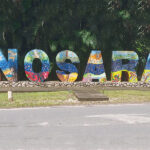 Discover the hidden gem of Costa Rica in our ultimate Nosara travel guide. Explore stunning beaches, world-class surf breaks, lush wildlife reserves, and a thriving yoga scene. Start planning your trip to Nosara today!
Discover the hidden gem of Costa Rica in our ultimate Nosara travel guide. Explore stunning beaches, world-class surf breaks, lush wildlife reserves, and a thriving yoga scene. Start planning your trip to Nosara today! - Gypsy Cab Nosara Shuttle Service to The Gilded Iguana Surf Hotel: A Comprehensive Review
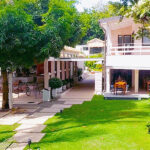 Experience the magic of Nosara with The Gilded Iguana Surf Hotel. Dive into our comprehensive review, from its rich history to modern amenities, and discover the convenience of the Gypsy Cab Nosara shuttle service from Liberia Airport.
Experience the magic of Nosara with The Gilded Iguana Surf Hotel. Dive into our comprehensive review, from its rich history to modern amenities, and discover the convenience of the Gypsy Cab Nosara shuttle service from Liberia Airport. - Your Comprehensive Guide to Flying to Nosara, Costa Rica
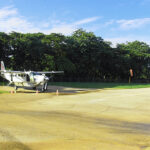 Plan your trip to Nosara, Costa Rica with our comprehensive guide. Learn about flight options, airlines, booking tips, and more to ensure a smooth journey.
Plan your trip to Nosara, Costa Rica with our comprehensive guide. Learn about flight options, airlines, booking tips, and more to ensure a smooth journey. - Experience Unforgettable Beach Vacations with BeachManagementNosara
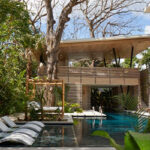 Experience unforgettable beach vacations with Beach Management Nosara. Choose from a variety of luxurious vacation houses, each offering a unique blend of comfort, luxury, and a close connection to nature. Enjoy top-notch amenities and services, including property management, vacation rentals, and concierge services, all designed to ensure a memorable stay in Nosara, Costa Rica.
Experience unforgettable beach vacations with Beach Management Nosara. Choose from a variety of luxurious vacation houses, each offering a unique blend of comfort, luxury, and a close connection to nature. Enjoy top-notch amenities and services, including property management, vacation rentals, and concierge services, all designed to ensure a memorable stay in Nosara, Costa Rica.
- Nosara vs. Tamarindo: Your Ultimate Guide to Choosing the Perfect Costa Rican Destination – A Gypsy Cab Nosara Exclusive
- 10 Articles You Can Read on National Geographic About Costa Rica
- Costa Rica’s Journey to Independence: A Tapestry of Resilience and Unity
- Nosara vs. Santa Teresa: A Comprehensive Guide for Tourists by Gypsy Cab Nosara
- Introduction to Playa Guiones
